When most travelers think of Peru, the only thing that comes to mind is the ancient citadel of Machu Picchu. However, there’s so much more to know in this beautiful country and here we have gathered 5 of the most impressive yet underrated archeological sites in Peru. Our country’s diversity goes beyond its natural features though each region has distinctive cultural expressions and history that we’d love to show you.
If you’re planning a trip to Peru, make sure to plan your trip according to your interests. If historical places are your call, then you’ve come to the right place, as Peru is divided into three regions, and though most travelers may think that Peru is all about the Inca culture, each region comprises several archeological sites belonging to other powerful cultures that were predated the famous Quechua civilization.
If you’re visiting Peru for the first time, you surely are planning to go to Machu Picchu, but here we’ve added five prehispanic ruins that you should consider adding to your travel itinerary!
1. Waqrapukara: Fortress & Astronomical Observatory
Among the different Inca archeological sites in Cusco, there’s a place that wasn’t entirely built by the Incas but still holds an impressive architectural style surrounded by the sheer drops of the Apurimac Canyon.
Waqrapukara is a total masterpiece located at 4,300 meters above sea level, composed of agricultural terraces, outstanding rock formations, cobblestone stairs, and interesting chambers that make it look like an old prison in the middle of nowhere.
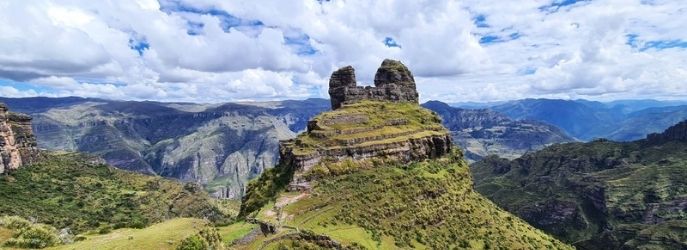
However, this ancient structure was inhabited by the Qanchis, a civilization that was established in these lands in 2500 B.C. According to several experts, Waqrapukara could have been a ceremonial center for this ancient culture though it later served as a fortress during the colonization process of the Incas.
You can visit Waqra Pukara on a full-day trek, but we have to highlight that this trail is quite challenging due to its steep inclines and altitude. If you’d like to add this outstanding pre-hispanic ruin to your itinerary, make sure to contact us right away!
2. Choquequirao: The Cradle of Gold
For those who didn’t know, Machu Picchu wasn’t the only lost citadel of the Incas. Choquequirao is one of the most important structures of this ancient civilization and its access is limited for the most adventurous only. Although most of the Inca structures were already known by the locals, it wasn’t until Hiram Bingham’s expedition that it was unveiled to the world.
However, the famous archeologist didn’t give much importance to this structure since his goal was to find Machu Picchu. Choquequirao is one of those gems lost in time and since this location wasn’t found by the Spanish colonizers, its real purpose is still a mystery. The archeological site has an extension of 1,000 hectares and only 30% of it has been fully excavated.
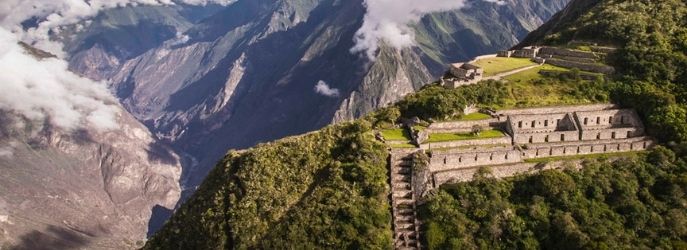
The so-called Cradle of Gold is also known as Machu Picchu’s Sacred Sister due to their similarities in architectural style and distribution. Currently, the only way to visit this wonder of the Inca era is by a 4-day trek through the cloud forest. The trail has a moderate to challenging difficulty and the highest peak reaches 3,050 meters above sea level.
Choquequirao is an off-the-beaten-track attraction in Cusco and receives about 9,500 visitors per year. However, the regional government is looking to promote this destination in the future, estimating 1 million visits per year by implementing a cable car to these ancient ruins. Therefore, if you wish to visit this uncrowded tourist attraction, you better hurry and organize your trip soon.
3. Tambo Colorado: Inca-Chincha Fortress
The Peruvian coast isn’t just about its scenic beaches and exuberant nature since it also comprises several archaeological sites such as Tambo Colorado, an ancient Chincha-Inca structure exceptionally preserved. If you love history as much as we do, you can’t leave this incredible pre-Columbian construction behind!
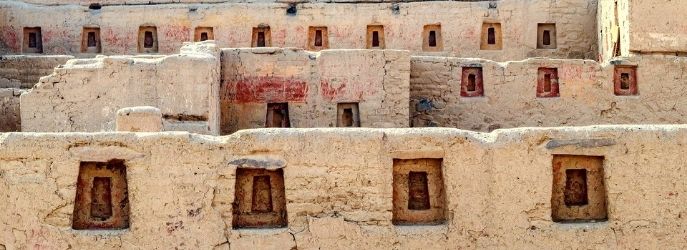
The Tambo Colorado shows the extensive engineering and architectural knowledge of our ancestors since it has remained nearly intact for centuries despite human action and seismic activity. It was traced back to the 15th century, in 1450 A.D. to be exact, and its original name could have been “Pucallacta” or “Pucahuasi,” two words derived from “Puka,” which means Red in the ancient Quechua Language.
The structure was painted with yellow, white, and red stripes, a paintwork that’s surprisingly maintained on some walls, hence the name. If you wish to visit this wonder of the ancient world, then we have the perfect excursion for you! Make sure to know everything about the Tambo Colorado Tour with this guide.
4. Chan Chan: The Largest Adobe Citadel of Ancient America
If you love history as much as we do, then you certainly can’t forget to pass by the largest adobe city of ancient America. The Chan Chan citadel is probably the principal attraction within Trujillo since it expands to 20 square kilometers and comprises several walled precincts with intriguing carvings on their surface.
According to archeologists, the Chan Chan citadel was built by the Chimu culture around 900 A.D. and it’s one of the biggest archaeological findings in northern Peru. It was declared a UNESCO World Heritage Site in 1986 due to its historical importance and impressive structures. This archeological complex is famous for its large extension with administrative, ceremonial, residential, and work areas precisely designated.
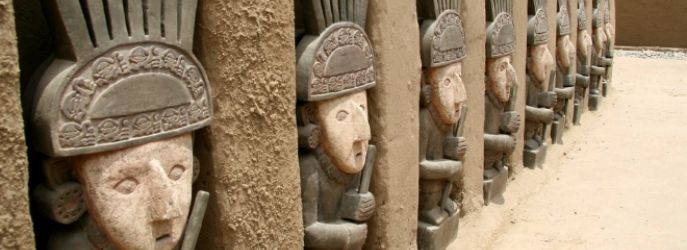
The architectural style varies depending on the zone, allowing the Chimu to differentiate their social-economic classes. The entire citadel is enclosed by a large adobe wall with beautiful engravings of animals and geometrical figures, integrating their symbolism and sacred belief into the architecture of the entire capital.
However, it is uncertain to know how many inhabitants occupied these lands before the Inca conquest, but it is estimated that it could have housed between 30,000 and 100,000 people. Would you like to discover this impressive site? Check out this Trujillo travel package and experience it in person!
5. Kuelap: The Fortress in the Clouds
This is one of the most impressive pre-Inca structures in the Peruvian high jungle. Kuelap is located near the Chachapoyas city, at 3,000 meters above sea level, which is why it is known as the ‘Fortress in the Clouds.’ This impressive structure is one of the oldest in Peru since it was built between the XI and XVI centuries by the Chachapoya civilization, which developed between 500 A.D. and 1570 A.D.
Although little is known of this ancient construction, archeologists believe that it could have served as a fortified citadel or an emergency shelter for the Chachapoya people. Kuelap holds impressive architecture with structures that rise up to 7 meters in height and a defensive wall that surpasses 19 meters of altitude at some points. Most of the buildings found in Kuelap have a rounded shape and most of them were used as residential areas.
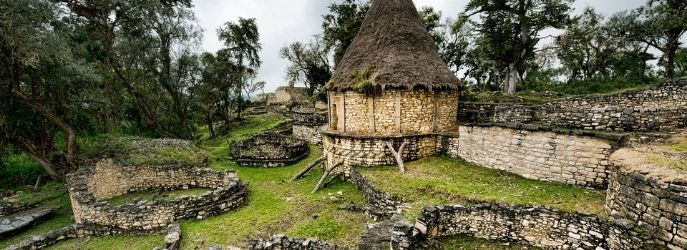
The access to this impressive fortress was limited to a few halls that got narrower as you reached the end, experts believed that it was another way of protecting the citadel from intruders. If you’re eager to know more about this ancient structure, we have the perfect itinerary for you! Our Amazon & Machu Picchu package takes you through the most impressive natural scenery of the northern high jungle of Peru, while also experiencing even more of our ancient history and culture.
Yes, we know, there are so many things to do in Peru besides Machu Picchu that it can take you some time trying to find the perfect activities and attractions for you. But don’t worry, we got you covered!
Contact our travel experts and start planning the perfect itinerary for your next vacation. If you’d like to have an idea of how to organize a trip to Peru, don’t forget to check our travel packages.
Viagens Machu Picchu, journeys that inspire, moments that last.
| Spanish > Viagens Machu Picchu |
| English >Viagens Machu Picchu |
| Portuguese > Viagens Machu Picchu |

